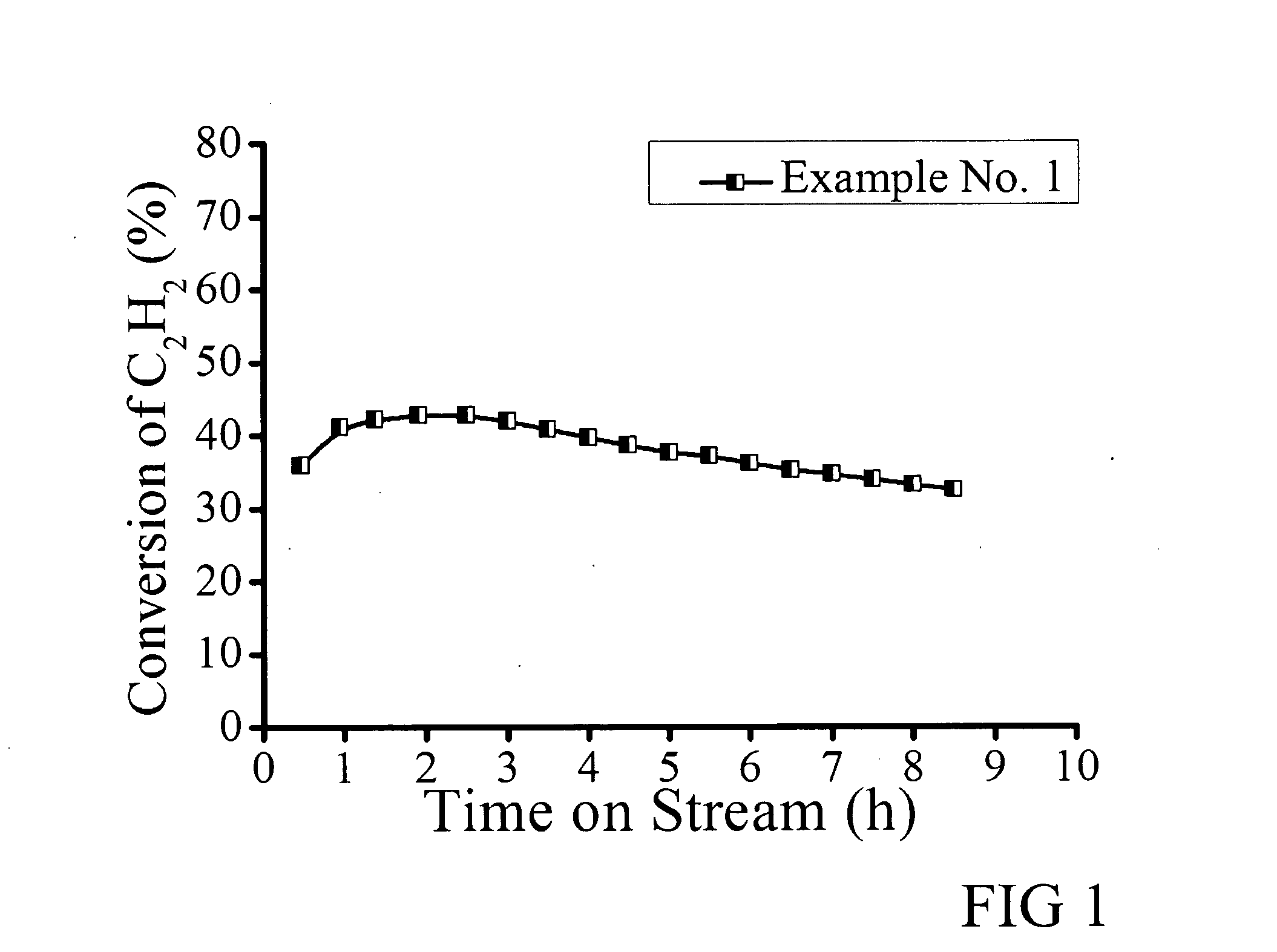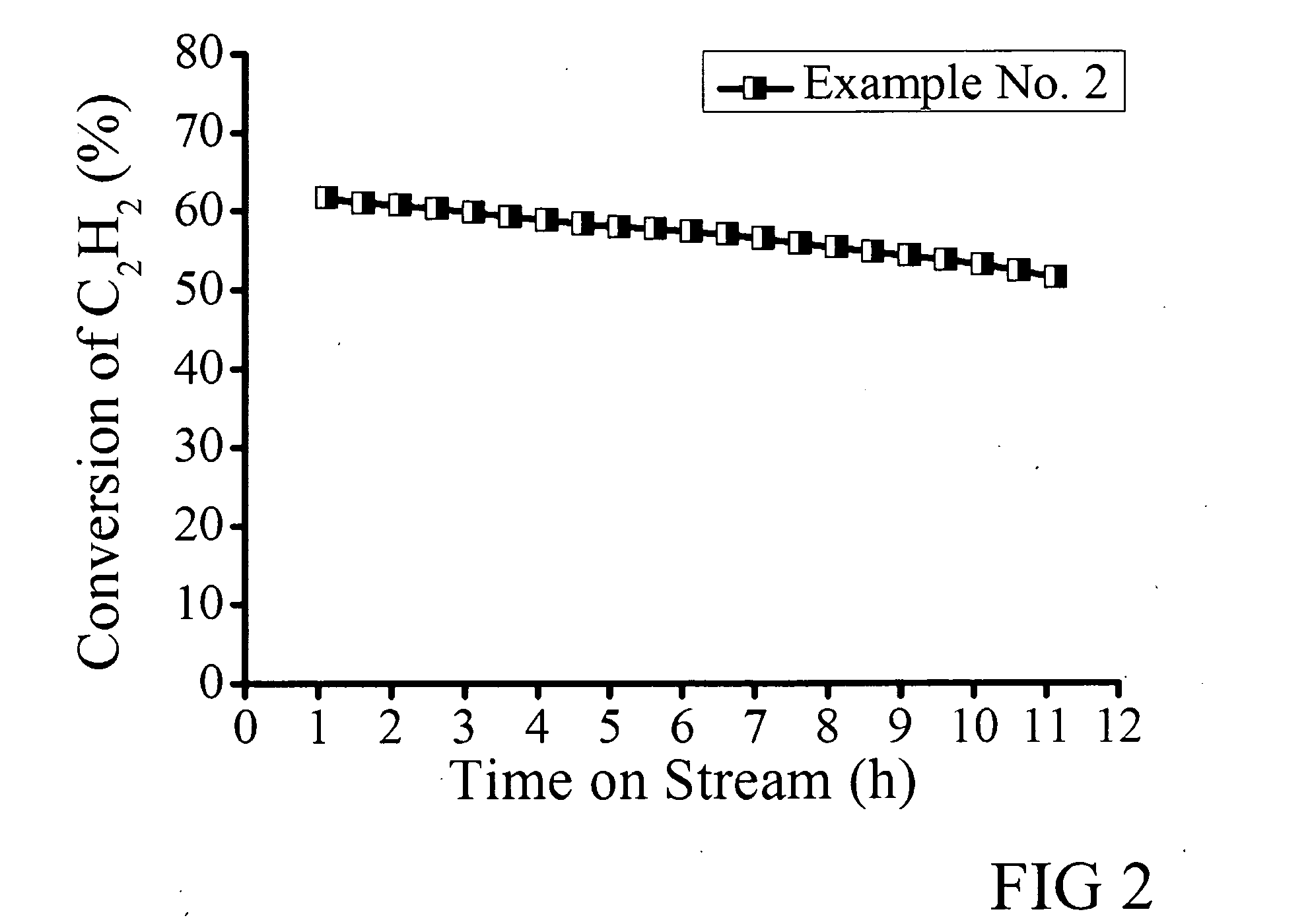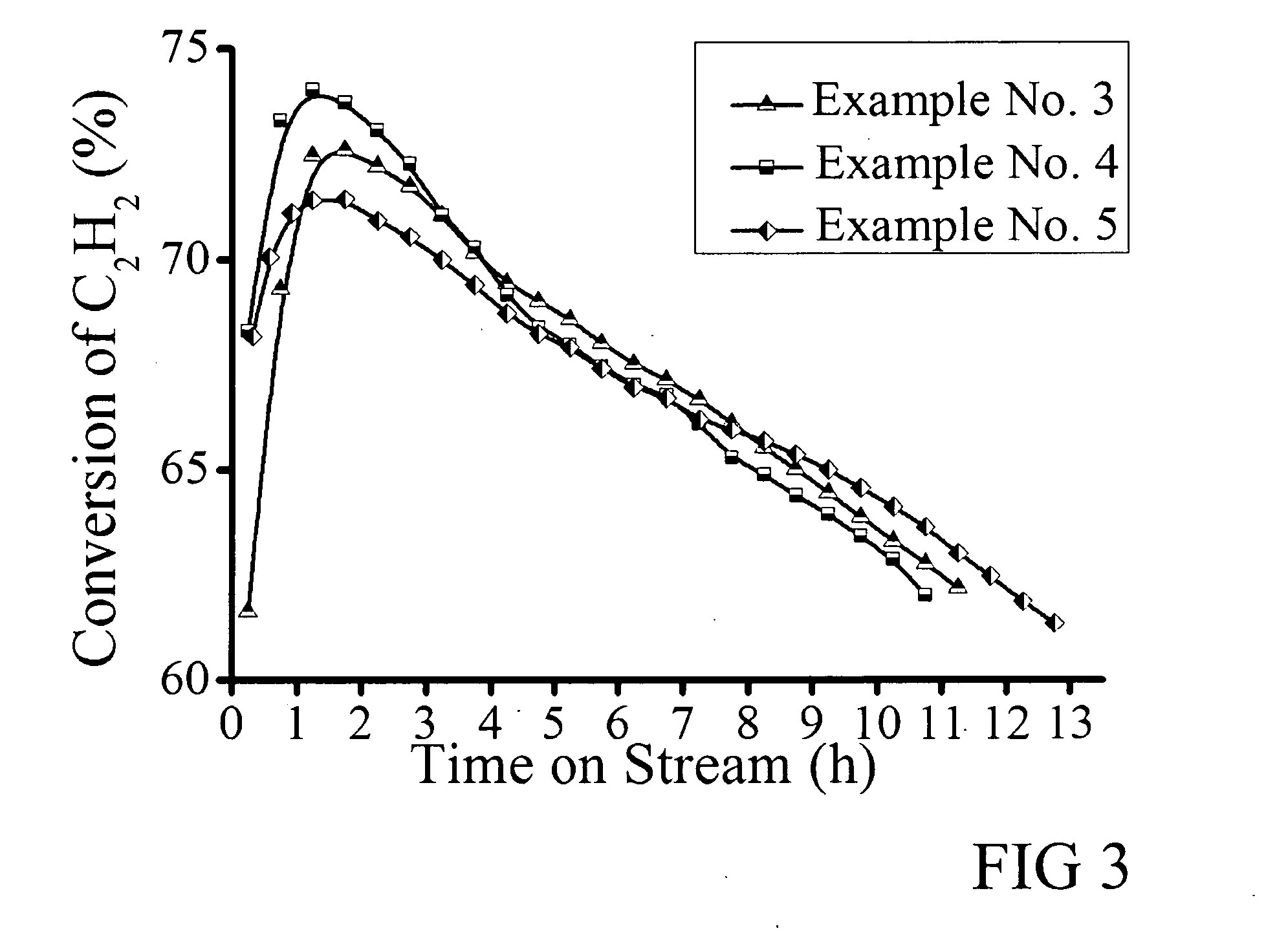Gold-based catalysts for acetylene hydrochlorination
a technology of acetylene hydrochlorination and gold-based catalysts, which is applied in the direction of physical/chemical process catalysts, metal/metal-oxide/metal-hydroxide catalysts, etc., can solve the problems of poor heat transfer, toxic and very harmful to human health and the environment, and the exhausted earth's mercury mineral resources
- Summary
- Abstract
- Description
- Claims
- Application Information
AI Technical Summary
Benefits of technology
Problems solved by technology
Method used
Image
Examples
example 1
[0036]A 0.5 wt % Au catalyst was prepared by impregnation. An incipient wetness method was used with coconut shell activated carbon (AC) as the support. 0.045 g HAuCl4.H2O was weighed and dissolved in 5 ml deionized water to form a 25 mM aqueous solution. 0.124 g KSCN was dissolved in 4 ml water to form 319 mM solution. Then the KSCN solution was added into the Au solution dropwise under stirring at 25° C. This liquid mixture was used as the impregnating solution. 5 g AC was mixed with the liquid mixture. The paste formed was ground at 60° C. for 2 h and dried at 120° C. for 9 h in static air.
[0037]The catalytic action of the catalyst was tested with 0.15 g of the catalyst placed in a U-shaped silica tube, which was then heated at 120° C. and dried for 10 min by continuously feeding 10 sccm N2. Activation was started by feeding 10 sccm HCl at 180° C. for 15 min. The reactions were carried out for the appropriate time at a total pressure of 1 atm and 180° C. The reactants were fed wi...
example 2
[0038]A 0.5 wt % Au catalyst containing 0.5 wt % Au and 1.0 wt % Cu was synthesized by adding 0.133 g CuCl2.2H2O (Beijing Chem.) into the 5 ml 25 mM HAuCl4 aqua solution described in Example 1. The other details of the catalyst preparation procedure were the same as Example 1. The C2H2 hydrochlorination reaction and detection were also performed as described in Example 1. The conversion versus reaction time curve is shown in FIG. 2, from which the following results were obtained:
Example No.Highest ConversionStability timeSelectivity261.6%10 h>99%
Catalyst Manufacture
examples 3-5
[0039]A series of 0.5 wt % Au catalyst containing 0.5 wt % Au and 1.0 wt % Cu were prepared, which further included 1 wt % La (Example 3), 1.0 wt % Mg (Example 4), and 1.0 wt % Ce (Example 5). These were synthesized by first adding 0.133 g CuCl2.2H2O into 5 ml 25 mM HAuCl4 aqua solution as described previously. Examples 3, 4, and 5 were prepared, respectively, by then adding 0.134 g LaCl3.7H2O, 0.423 g MgCl2.6H2O, and 0.133 g CeCl3.7H2O. To each of these solutions were then added 4 ml 319 mM KSCN aqua solution. The other preparation details are the same as Example 1. C2H2 hydrochlorination reaction and detection were performed as described in Example 1. The conversion versus reaction time curves are shown in FIG. 3, from which the following results were obtained:
Example No.Highest ConversionStability timeSelectivity372.6%11.5 h>99%473.7%9.75 h>99%571.4% 8 h>99%
Catalyst Manufacture
PUM
| Property | Measurement | Unit |
|---|---|---|
| chemical | aaaaa | aaaaa |
| chemical composition | aaaaa | aaaaa |
| lifetime | aaaaa | aaaaa |
Abstract
Description
Claims
Application Information
 Login to View More
Login to View More - R&D
- Intellectual Property
- Life Sciences
- Materials
- Tech Scout
- Unparalleled Data Quality
- Higher Quality Content
- 60% Fewer Hallucinations
Browse by: Latest US Patents, China's latest patents, Technical Efficacy Thesaurus, Application Domain, Technology Topic, Popular Technical Reports.
© 2025 PatSnap. All rights reserved.Legal|Privacy policy|Modern Slavery Act Transparency Statement|Sitemap|About US| Contact US: help@patsnap.com



